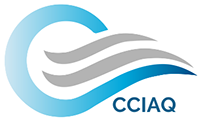Strategies for controlling the quality of indoor air can be condensed into six basic control methods:
Source Management is the action of identifying, avoiding and isolating or removing a source of air contamination. It is one of the most important strategies because it addresses root causes of IAQ pro- blems.
Local Exhaust involves the removal of point sources of pollutants before they can disperse into the indoor air, by expelling contaminated air directly outside. Sites where local exhaust is used include restrooms and food preparation areas. Other locations where pollutants originate at specific points and can be easily exhausted include storage rooms and photocopying rooms.
Ventilation introduces outdoor air into a building to displace or dilute contaminants in the indoor air. Generally, local building codes specify the quantity (and sometimes quality) of outdoor air that must be continuously supplied to an occupied area. For activities such as painting, or in the event of chemical spills, a temporary increase in ventilation can help to dilute the concentration of noxious fumes in the air. In such cases, reducing or eliminating recirculated air is advisable. Ventilation should not be consi- dered as a substitute for proper work practices and other measures that eliminate or control the original source of the pollutants. Ventilation is most efficient and effective when applied to a well-designed and managed facility.
Exposure Control includes adjusting the time and location of building occupancy to minimize expo- sure to intentionally released air contaminants. For example, the best time for stripping and waxing floors may be on weekends. This schedule would allow the floor products to off-gas over the weekend, reducing the level of odours or contaminants in the air when the building is occupied. This strategy may require adjusting ventilation rates which are often reduced during weekends and other unoccupied periods.
Air Cleaning is the capture of particles from the air. Various types and levels of particle filtration are normally included in ventilation systems. Gaseous contaminants can also be removed, but in most cases these types of systems are complex and expensive and should be evaluated on a case-by-case basis.
Education of the building occupants about IAQ is critical. People must be provided with information about the sources and effects of contaminants (including those under their control), and about the proper operation of the ventilation system. With this knowledge, they will better understand their indoor envi- ronment and can take steps to reduce their personal exposure and improve the overall IAQ.
For more of an introduction to indoor air quality (IAQ), visit our introductory module: https://iaqresource.ca/wp-content/uploads/2019/06/CCIAQB-Module-1-Eng.pdf
